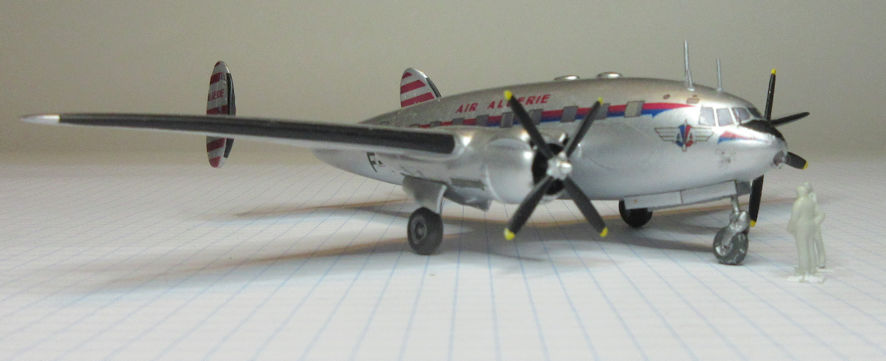Fabulous French Aircraft
Potez 580 – Sud Ouest Bretagne – Airbus A.300
Anyone wandering through the Museum’s galleries will soon notice there are more French aeroplanes than you would normally find in an aviation museum outside France. That is the case because the French aviation industry has always been among the most important in the world – except for a short period in the early 1940s. It is certainly among the top industries today with companies like Dassault producing some of the most important military aircraft and Airbus,, with its manufacturing center in France, being a leas\ding manufacturer of airliners. Besides that, I think the French make some of the most attractive looking aircraft ever flown.
So let’s have a look at three French aircraft this time.
The Potez 58 series was a light aircraft built in the France in the 1930s in a number of versions. The first was the 580 that was powered by a Potez radial engine. A handful were also built with the British deHavilland Gypsy engine and some were built for military liaison use. The basic version was a three seater for a pilot and two passengers and a later version, the Potez 586, was a four seater. Around 200 were manufactured and were a common sight in French skies in the second half of the 1930s.
This model was made from one of my treasured Dujin kits. These are now quite rare and they are not easy to make, being resin kits hand made by Jean-Pierre Dujin who died in 2010. He made us kits of a couple of hundred aircraft that are highly unlikely to be produced by major kit makers, including forgotten types such as this Potez 580. This is quite a challenging kit to make but repays care and patience and looks elegant in this scheme that Dujin suggested.
At the conclusion of World War II the French aviation industry had a lot of catching up to do and manufactured a range of aircraft that were interesting and designed to help reestablish the industry, including fighters and airliners. This Sud Ouest Bretagne is one of those aircraft that was almost certainly doomed to fail because it was trying to force its way into an airliner market that was already saturated with ex-war American aircraft such as the Douglas DC-3 (C-47) and Douglas DC-4 (C-54). As a result only 45 Bretagnes were manufactured, but it certainly is a lot more interesting to look at than either of those Douglas airliners.
Here is the kit of another small kit manufacturer, F-Rsin, which I understand is a joint French and British company. It has produced a number of kits of early post-war French airliners that are now long forgotten. This is a relatively simple kit to make that comes in only a handful of relatively well moulded resin parts. The construction is somewhat simplified and gives ample scope for super detailing, if that is your thing. However, in 1/144 scale there is often little point in doing too much detailing because that adds little to the overall effect of the model.
Finally for this instalment, one of the great successes of the French – and European more generally – aviation industry in the range of Airbus Airliners that were initially manufactured in Toulouse in southern France. The first of the Airbus airliners was the A.300 which was designed to break into the airliner market that had become dominated by American manufacturers such as Douglas and Boeing. The first A.300 flew in 1972 and since then it has been joined by more advanced designs such as the A.310, the A.330 and A.340 which follow the same basic design philosophy of twin aisle airliners. A few A.300s flew in Australia but more recently A.320s and A.330s have become mainstream airliners here.

For many years the only available 1/144 Airbus A.300 kit was the ancient Airfix kit that was released around the time that the aircraft itself began flying. By modern day standards this is a simple and relatively crude kit but comes up nicely with a good paint scheme and after-market decals. More recently F-Rsin Plastic has offered the later A.300-600 version and more recently again Eastern Express has offered the earlier A.300B-4 version which effectively replaces the old Airfix kit.

